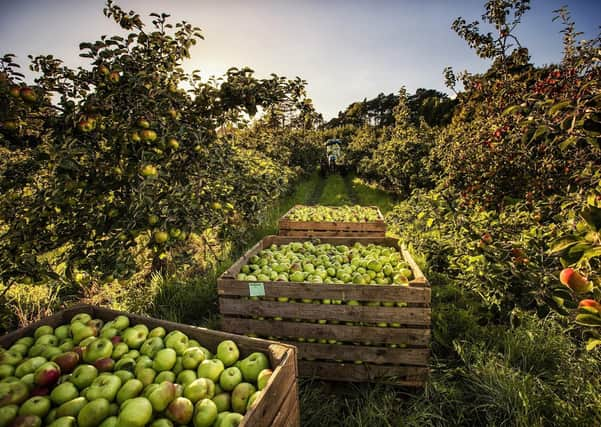On Apple Day you could do worst things than plant an apple tree


The apple is used as a symbol of the physical, cultural and genetic diversity that we shouldn’t allow to slip away.
Their hope is that linking particular apples with their place of origin helps orchards to be recognised for their contribution to local distinctiveness.
Advertisement
Advertisement
Nowhere can already be doing this as much as the apple growers of Armagh. The Armagh Bramley has the distinction of having Protected Geographic Indicator status ( PGI) making it a cherished product from a single area, like Champagne and Parma ham.
The apple crop generally this year hasn’t been as abundant as in previous years. Last year the Discovery tree in my garden creaked with the weight of the deep ruby coloured orbs. This year the harvest was half of what I picked last year. On the plus side they’re sweeter and more flavourful than previous years.
Meanwhile plums are having a bumper year. The damson tree at the bottom of my parent’s garden is groaning with fruit. That’s the wonderful thing about nature – you can’t dictate to a fruit tree how to behave.
It follows the natural order of things and if it feels like taking it easy for a while it will. We could probably all take a leaf out of their book.
Advertisement
Advertisement
Despite my limited yield this year I have been gifted apples from people to make up the shortfall.
The best way to store the apples short term is in a cool place. The vegetable containers at the bottom of the fridge are now full of eating apples. The cookers tend to be more robust and are tucked away in an outside shed.
If you want to preserve cooking apples further they can be made into a butter. Core and roughly chop apples and then add to a pan with a third of their weight in sugar and a pinch of clove. Boil until the mixture is dark, blend and pass through a sieve. Bottle in clean jam jars and use like jam or to sweeten crumbles. It also works well with roast pork, oily fish or charcuterie.
Sweet apples are a bit trickier to conserve.
Last year I made a brine with 100g salt, 100g brown sugar, crushed juniper berries, cloves, peppercorns and a litre of water. Boil the mixture until the sugar and salt have dissolved and when cool pour over a jar packed with apples. It’s particularly good for smaller fruit. They can be sliced and added to roast pork or chicken and blended into the gravy at the end to great effect. They can be sliced and added to quick pork or chicken dishes as a seasoning and to add a bit of zing to your dishes.
Advertisement
Advertisement
My first recipe is for an apple torta where a cake batter with buttermilk is made and studded with apple slices before baking. When ready it’s dusted with sugar and cinnamon and hot honey drizzled over the top.
The other recipe is for a baked cheesecake. Baking the cream cheese actually makes it a little lighter. The mixture is rippled with Bramley apple puree and when cool sliced red eating apples are tossed in a lemon syrup and placed on top.
It’s a good way to celebrate eating and cooking apples. You get contrasting levels of sweetness and textures.
Martin Luther once said “Even if I knew tomorrow that the world would go to pieces, I would still plant my apple tree”.
It’s a sentiment that continues to bear fruit. On Apple Day on Thursday you could do worse things than plant an apple tree for the future.